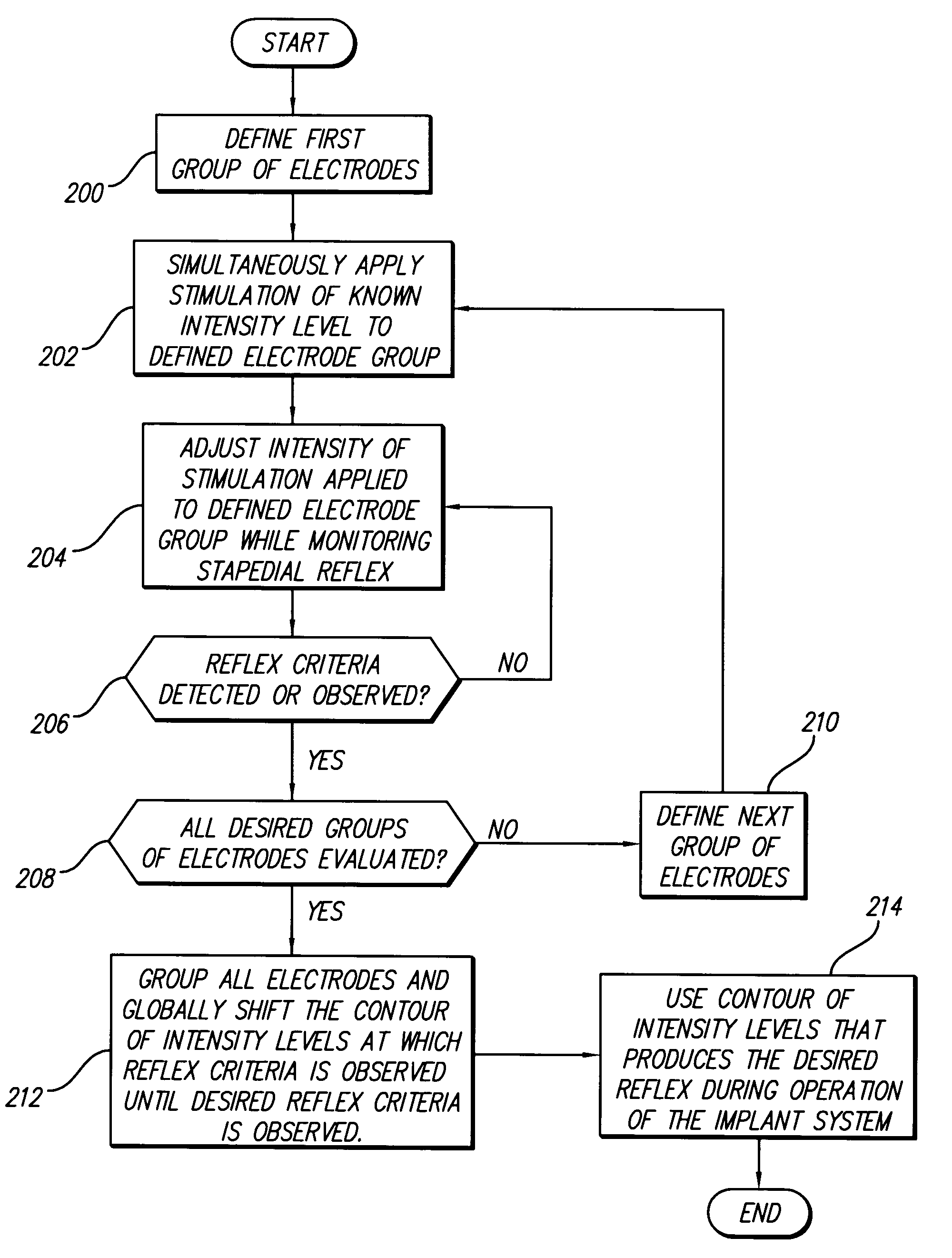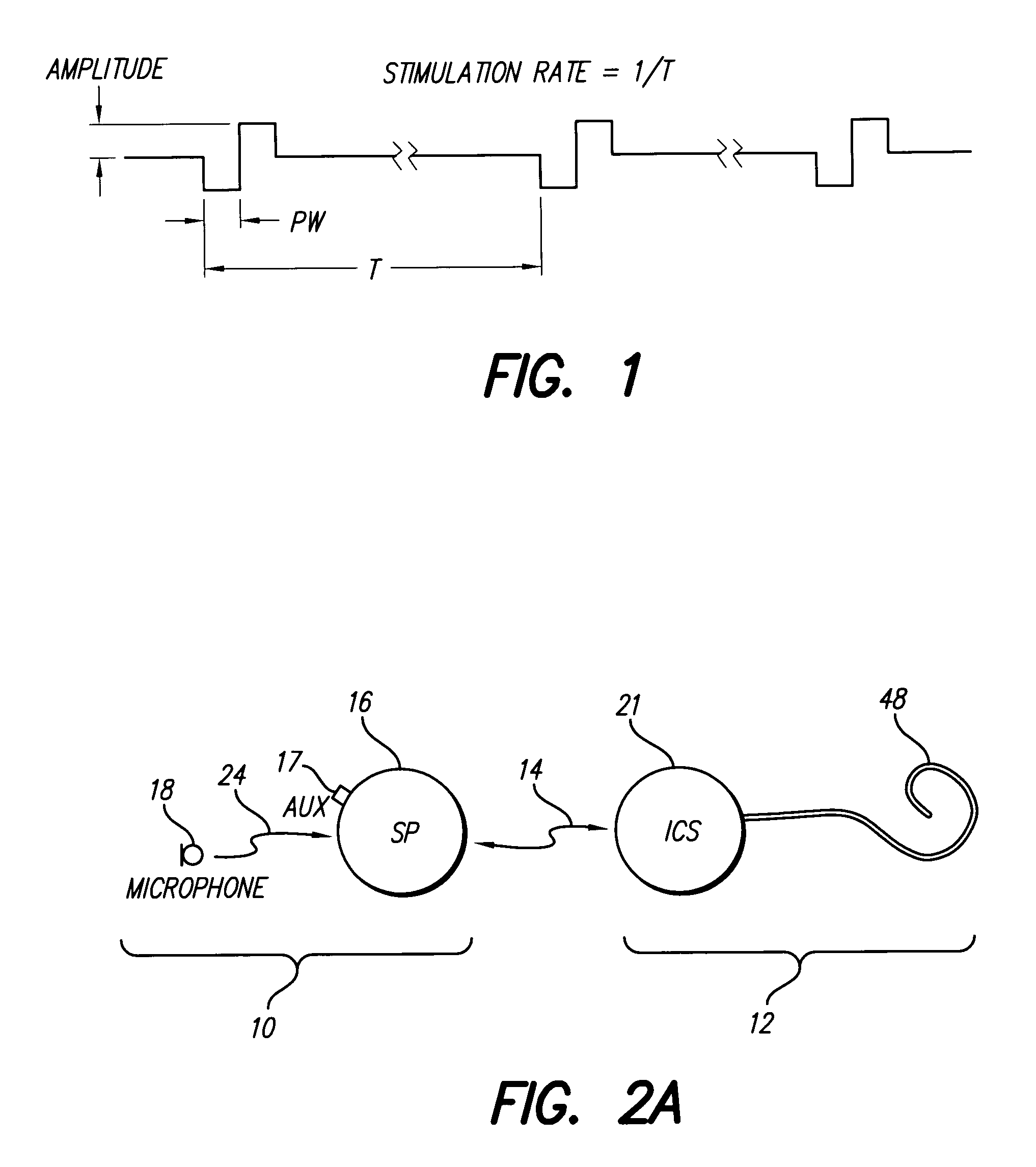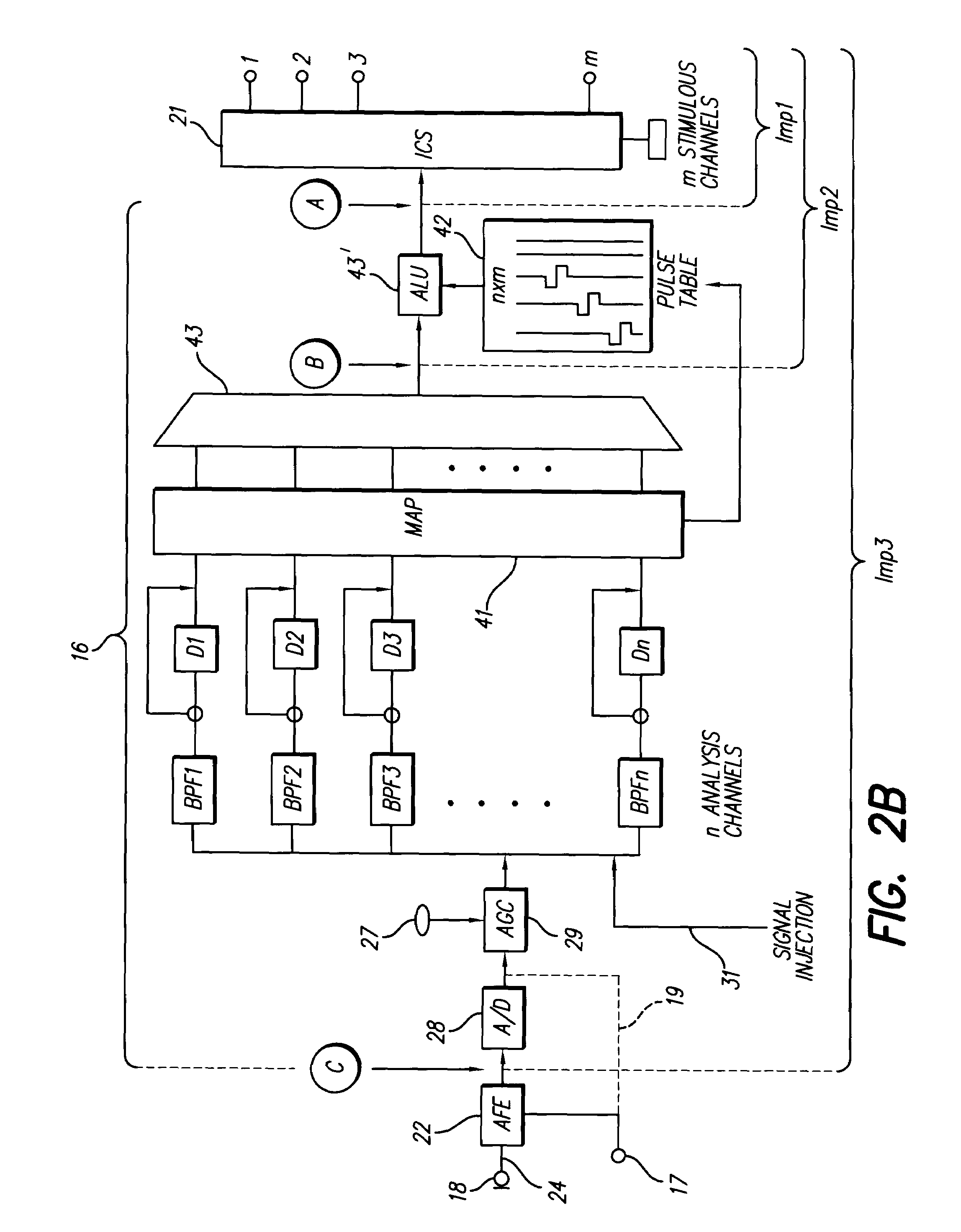Method and system for obtaining stapedial reflexes in cochlear implant users using multiband stimuli
a multi-band stimuli and cochlear implant technology, applied in electrotherapy, therapy, etc., can solve the problems of not being able to fully control and customize the operation of cochlear implants, the implementation portion of cochlear implants, and the external wearable processor (or speech processor) have become increasingly complicated and sophisticated, and each channel of a multi-channel stimulation system is an extremely pain-intensive and time-consuming task. , to achieve the effect of improving the probability of reflex measurement,
- Summary
- Abstract
- Description
- Claims
- Application Information
AI Technical Summary
Benefits of technology
Problems solved by technology
Method used
Image
Examples
Embodiment Construction
[0033]The following description is of the best mode presently contemplated for carrying out the invention. This description is not to be taken in a limiting sense, but is made merely for the purpose of describing the general principles of the invention. The scope of the invention should be determined with reference to the claims.
[0034]FIG. 1 shows a waveform diagram of a biphasic pulse train, and defines stimulation rate, pulse width and pulse amplitude.
[0035]FIG. 2A shows a cochlear stimulation system that includes a speech processor portion 10 and a cochlear stimulation portion 12. The speech processor portion 10 includes a speech processor (SP) 16 and a microphone 18. The microphone 18 may be connected directly to the SP 16, or may be coupled to the SP 16 through an appropriate communication link 24. An auxiliary input port 17 may also be part of the speech processor 16 to allow input signals from a source other than the microphone 18 to be input into the SP 16.
[0036]The cochlear...
PUM
 Login to View More
Login to View More Abstract
Description
Claims
Application Information
 Login to View More
Login to View More - R&D
- Intellectual Property
- Life Sciences
- Materials
- Tech Scout
- Unparalleled Data Quality
- Higher Quality Content
- 60% Fewer Hallucinations
Browse by: Latest US Patents, China's latest patents, Technical Efficacy Thesaurus, Application Domain, Technology Topic, Popular Technical Reports.
© 2025 PatSnap. All rights reserved.Legal|Privacy policy|Modern Slavery Act Transparency Statement|Sitemap|About US| Contact US: help@patsnap.com



